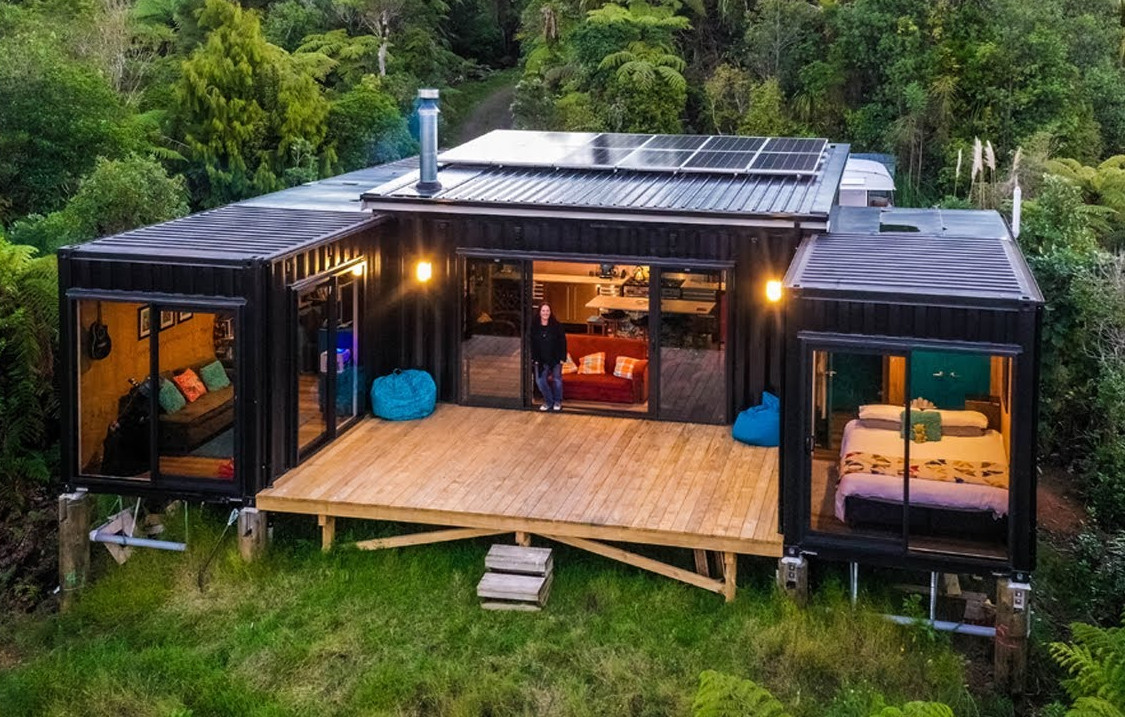Off-grid living is a lifestyle choice that appeals to many people who want to reduce their environmental impact, live more independently, and save money on utility bills. One of the most popular ways to achieve off-grid living is by using shipping containers as the primary building material for a home or cabin. Shipping containers are durable, modular, and widely available, making them an attractive option for off-grid enthusiasts. But are they really the best choice? In this blog post, we will explore the pros and cons of using shipping containers for off-grid living and help you decide if they are right for you.
Pros of Using Shipping Containers for Off-Grid Living
Affordability: One of the main advantages of using shipping containers for off-grid living is their low cost. Depending on the size, condition, and location of the container, you can buy one for as little as $1,500. Compared to the cost of building a conventional house, this is a considerable saving. You can also save money on labor and materials, as shipping containers are already designed to withstand harsh weather and heavy loads. You can use them as they are or modify them to suit your needs and preferences.
– Durability: Another benefit of using shipping containers for off-grid living is their durability. Shipping containers are made of steel, which is resistant to fire, water, pests, and corrosion. They can last for decades with minimal maintenance and can withstand earthquakes, hurricanes, and other natural disasters. They are also easy to transport and relocate, as they can be stacked and moved by trucks, trains, or ships.
– Sustainability: Using shipping containers for off-grid living is also a sustainable choice, as you are reusing and repurposing an existing material that would otherwise end up in a landfill or a scrapyard. Shipping containers are also compatible with renewable energy sources, such as solar panels, wind turbines, or hydroelectric generators. You can install these systems on or near your container home and enjoy a self-sufficient and eco-friendly lifestyle.
– Modularity: One of the most appealing features of using shipping containers for off-grid living is their modularity. You can use one or more containers to create a custom-designed home that suits your needs and preferences. You can stack them vertically or horizontally, cut out windows and doors, add insulation and cladding, and create any layout you want. You can also expand or downsize your home by adding or removing containers as needed.
Cons of Using Shipping Containers for Off-Grid Living
– Permits and Regulations: One of the main challenges of using shipping containers for off-grid living is dealing with permits and regulations. Depending on where you live, you may need to obtain planning permission, building permits, zoning approvals, and inspections before you can start or finish your project. You may also need to comply with specific codes and standards regarding structural integrity, fire safety, insulation, ventilation, plumbing, electrical wiring, and sanitation. These requirements may vary from place to place and may be difficult or expensive to meet.
– Temperature Control: Another drawback of using shipping containers for off-grid living is temperature control. Shipping containers are made of metal, which conducts heat and cold very well. This means that they can get very hot in the summer and very cold in the winter unless you install adequate insulation and ventilation systems. You may also need to use heating and cooling devices to maintain a comfortable indoor temperature, which may increase your energy consumption and costs.
– Space Limitations: A third disadvantage of using shipping containers for off-grid living is space limitations. Shipping containers come in standard sizes, usually 20 feet or 40 feet long, 8 feet wide, and 8.5 feet high. This means that you have a limited amount of floor space and headroom to work with, which may not be enough for some people or activities. You may also have difficulty finding furniture and appliances that fit well in your container home.
- Aesthetics: A final con of using shipping containers for off-grid living is aesthetics. Some people may find shipping containers unattractive or dull, as they have a plain and industrial look. You may also face opposition from your neighbours or community members who do not like the appearance of your container home or who think it lowers the property value of the area. You may need to invest in painting, cladding, landscaping, or other design elements to improve the curb appeal of your container home.
 عربي
عربي عربي
عربي